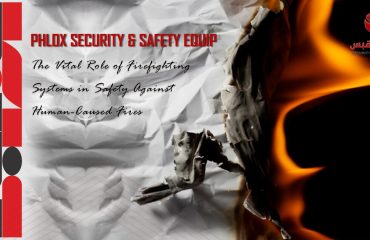
Essential Fire Safety Procedures: Protecting Lives and Property
Fire.safety is crucial in preventing disasters and protecting lives, whether at home or in the workplace. Implementing effective fire safety procedures can save lives, minimize property damage, and reduce the risk of fire-related injuries. This blog will walk you through the most important fire safety procedures that every individual and organization should follow to stay safe.
1. Prevent Fires Before They Start: Fire.Safety Tips
The first step in fire safety is prevention. By maintaining your home or workplace and being mindful of fire hazards, you can significantly reduce the risk of fires. Here are some essential fire prevention tips:
- Maintain Electrical Systems: Regularly inspect electrical wires, outlets, and appliances for signs of damage. Avoid overloading circuits, which can lead to electrical fires.
- Properly Store Flammable Materials: Keep flammable items such as gasoline, cleaning products, and paper away from heat sources like stoves or heaters.
- Install Smoke Alarms: Ensure smoke detectors are installed in every room and hallway. Test them monthly to ensure they work correctly.
- Keep Fire Extinguishers Accessible: Place fire extinguishers in easily accessible locations on each floor of your home or business, and make sure everyone knows how to use them.
- Kitchen Fire Safety: Never leave cooking equipment unattended. Keep towels, paper, and other flammable materials away from stoves and ovens.
By taking these fire prevention measures, you can drastically reduce the chances of a fire starting in your home or workplace.
2. Develop a Fire.Safety Plan
Creating a fire safety plan is essential for effective emergency response. A well-organized fire safety plan ensures everyone knows how to act during a fire emergency.
- Escape Routes: Designate multiple escape routes and ensure they are clear of obstacles. Make sure all family members or employees know where the nearest exits are located.
- Conduct Fire Drills: Regular fire drills are essential, especially in workplaces. Practicing evacuation procedures ensures everyone can leave safely and quickly.
- Designated Meeting Area: Choose a safe location outside your building where everyone can gather after evacuating.
Having a clear fire safety plan helps ensure quick and safe evacuations in the event of an emergency.
3. Quick and Effective Fire Response
In the event of a fire, acting quickly can save lives and minimize damage. Follow these safety tips during a fire emergency:
- Alert Others: Trigger the fire alarm immediately and alert everyone to evacuate.
- Evacuate Safely: Don’t hesitate. Evacuate the building as quickly as possible using the planned escape routes.
- Use Fire Extinguishers Wisely: If the fire is small and contained, use a fire extinguisher. If the fire has spread, focus on getting out safely.
- Call Emergency Services: Contact your local fire department right away to report the fire and request assistance.
Remember, safety is the top priority. Never attempt to fight large fires on your own.
4. Post-Incident Review and Improvement
After the fire has been extinguished, conduct a thorough review of the situation:
- Evaluate the Fire_Safety Plan: Review how effective your fire evacuation plan was. Did everyone know what to do? Were there any obstacles in evacuation?
- Improve Procedures: Make necessary changes to your safety plan and procedures based on the post-incident review.
Regularly reviewing and updating your fire.safety measures will ensure they remain effective in future emergencies.


